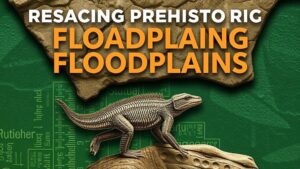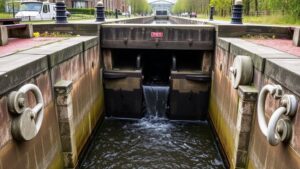LiDAR Technology: Detecting Buried Structures and Relics in Historic Locations
LiDAR Technology: Detecting Buried Structures and Relics in Historic Locations
Light Detection and Ranging (LiDAR) technology has revolutionized the fields of archaeology and heritage conservation by enabling researchers to uncover and analyze buried structures and relics in historic locations. This technology employs laser light to measure distances and create high-resolution, three-dimensional maps of the terrain beneath vegetation and soil, which has been a game-changer for archaeological discovery.
Overview of LiDAR Technology
LiDAR operates by emitting laser pulses from an airborne or ground-based platform. The reflected light is captured by sensors, and the data collected allows for the generation of detailed digital elevation models (DEMs) and point clouds. This technology has become increasingly accessible, with advancements in UAV (Unmanned Aerial Vehicle) systems facilitating large-scale survey capabilities and detailed topographical mapping.
Historical Applications of LiDAR Technology
The application of LiDAR in archaeology can be traced back to early 2000s, with significant contributions made in the identification of ancient Maya cities in Central America. A notable example occurred in 2018 when researchers used LiDAR to map the ancient Maya city of Tikal in Guatemala, revealing previously unknown structures, including pyramids and roadways.
LiDAR technology was able to effectively penetrate the dense jungle canopy, which often obscures archaeological features from traditional survey methods. The findings not only advanced our understanding of the spatial organization of Maya society but also suggested that their civilization was larger and more complex than previously thought.
Case Studies of LiDAR in Historic Locations
- Stonehenge, England: LiDAR surveys conducted in 2016 uncovered 17 previously unreported archaeological features surrounding the iconic monument, including large ditches and potential burial mounds. This highlights the potential of the site as a significant archaeological landscape beyond the famous stones.
- California’s Anza-Borrego Desert State Park: LiDAR was utilized to detect hidden ancient Native American settlement patterns. The technology revealed structures that had been thoroughly concealed under the desert sands, thus showcasing the effectiveness of LiDAR in arid environments.
Benefits of LiDAR Technology in Archaeology
LiDAR offers numerous advantages over traditional archaeological methods:
- Efficiency: LiDAR can cover vast areas in a relatively short period, allowing archaeologists to gather data that would take years to collect through ground surveys.
- High Resolution: The technology can produce highly detailed 3D models that reveal topographical changes and structures with precision.
- Non-Invasive: LiDAR minimizes disturbance to the site, aligning with ethical practices in archaeology.
Challenges and Limitations
Despite its many advantages, LiDAR technology is not without challenges:
- Interpretation of Data: A significant challenge lies in the interpretation of LiDAR data, requiring skilled professionals with knowledge in both remote sensing and archaeological methodology.
- Cost Factors: Acquisition of LiDAR technology and the expertise to process and analyze the data can be expensive, potentially limiting its use in smaller projects.
The Future of LiDAR in Archaeology
The future of LiDAR in archaeology appears promising, with continuous advancements improving resolution, efficiency, and affordability. Emerging technologies, such as machine learning algorithms, hold the potential to revolutionize data processing and interpretation, making it easier to identify patterns and anomalies indicative of hidden structures.
Conclusion and Actionable Takeaways
LiDAR technology provides a groundbreaking approach to detecting buried structures and relics in historic locations, enhancing our understanding of past civilizations. Archaeologists and heritage professionals are encouraged to incorporate LiDAR into their research methodologies to explore new terrains and uncover hidden histories. As technology advances, educational programs should be developed to train professionals in both the operational and analytical aspects of LiDAR, ensuring the effective integration of this innovative tool in future archaeological endeavors.


